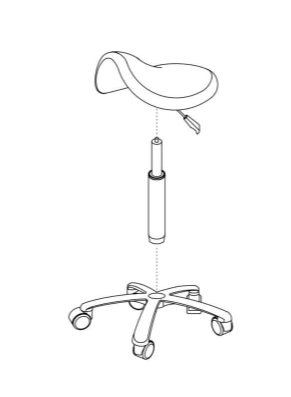Sitting in a chair for extended periods can lead to discomfort and even pain. However, with the right adjustments, you can achieve optimal comfort and reduce the risk of developing musculoskeletal issues. This guide covers everything you need to know about adjusting your chair to fit your body and improve your sitting experience.
Adjust the seat height.
The first adjustment you should make to your chair is the seat height. Your feet should be flat on the ground, with your knees at a 90-degree angle. If your chair is too high, your feet will dangle, causing pressure on the back of your thighs. If your chair is too low, your knees will be higher than your hips, causing pressure on your lower back. Adjust the height until your feet are flat on the ground and your knees are at a 90-degree angle.
Adjust the seat depth.
Once you have adjusted the height of your chair, the next step is to adjust the seat depth. The seat depth is the distance between the backrest and the front edge of the seat. If the seat depth is too short, you will feel pressure on the back of your thighs, and if it is too long, you will not be able to sit back in the chair properly. Adjust the seat depth so that there is a gap of about two to three fingers between the back of your knees and the front edge of the seat. This will ensure that your thighs are supported, and you can sit back in the chair comfortably.
Adjust the backrest height.
The backrest height is an important adjustment to make for optimal comfort. Adjust the backrest height so that it supports the natural curve of your spine. If the backrest is too low, you will not have enough support for your upper back and shoulders, which can lead to slouching and discomfort. If the backrest is too high, it can push your head forward and cause neck pain. Adjust the backrest height so that it supports your entire back, from your lower back to your shoulders.
Adjust the lumbar support.
The lumbar support is another important adjustment to make for optimal comfort. This support is located at the base of the backrest and helps to support the natural curve of your lower back. If your chair has adjustable lumbar support, adjust it so that it fits snugly against your lower back. This will help to reduce pressure on your lower back and prevent discomfort. If your chair does not have adjustable lumbar support, consider using a lumbar cushion to provide additional support.
Adjust the armrests.
Armrests are an important part of chair adjustments for optimal comfort. They help to support your arms and shoulders, reducing strain on your neck and upper back. Adjust the armrests so that they are at the same height as your desk or keyboard. This will help to keep your shoulders relaxed and prevent tension in your neck and upper back. If your armrests are too high or too low, consider using a cushion or adjusting the height of your desk or keyboard to achieve the proper alignment.


Leave a comment